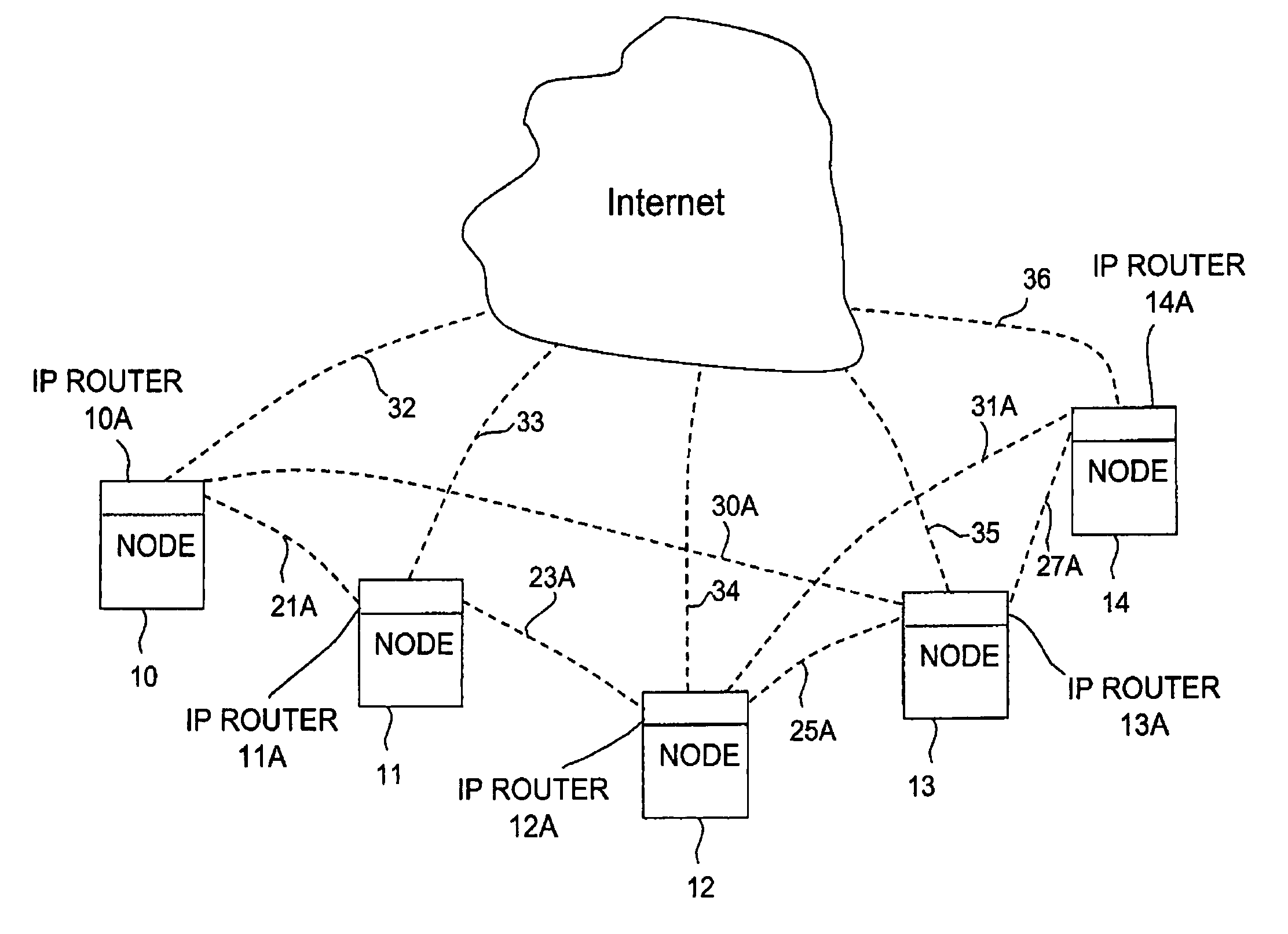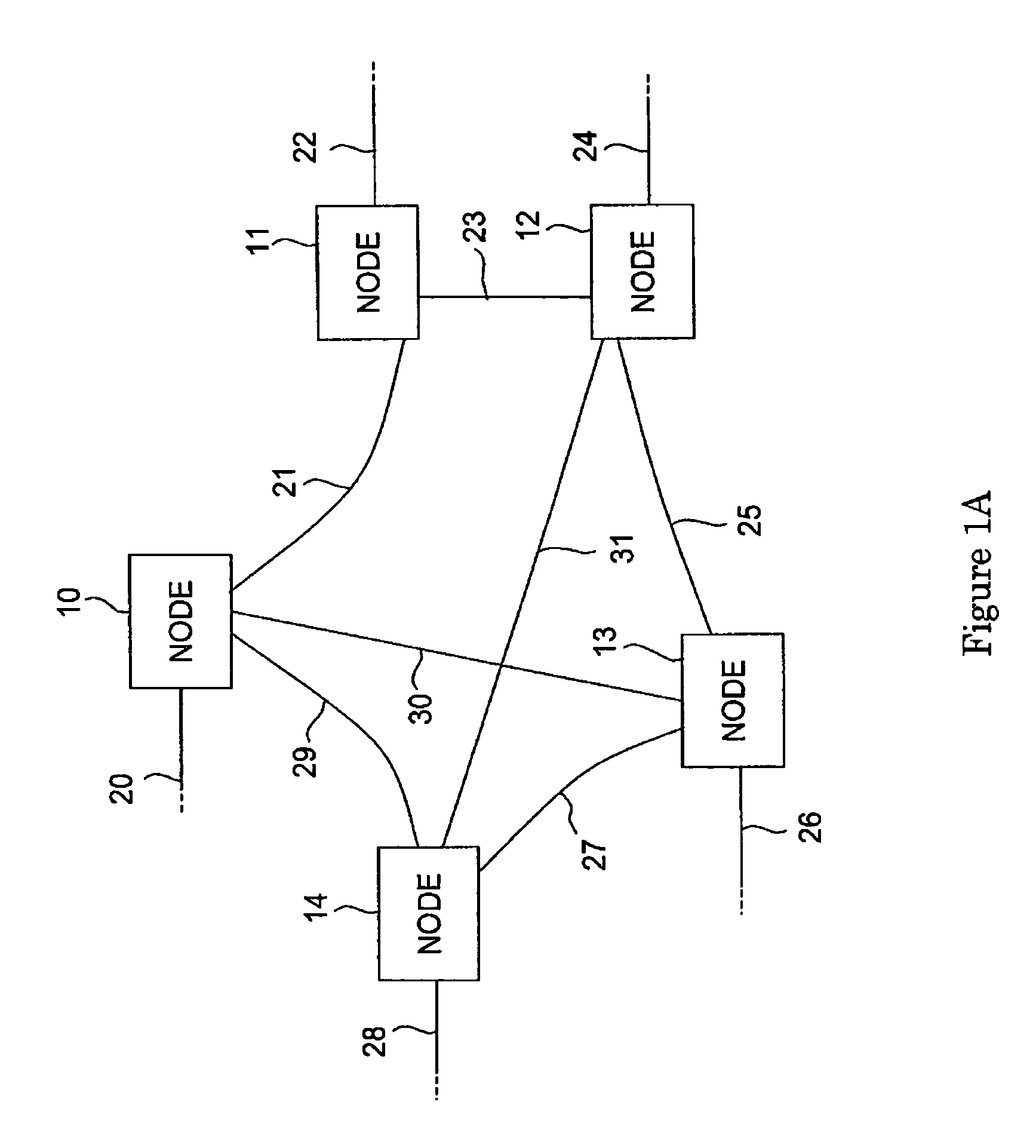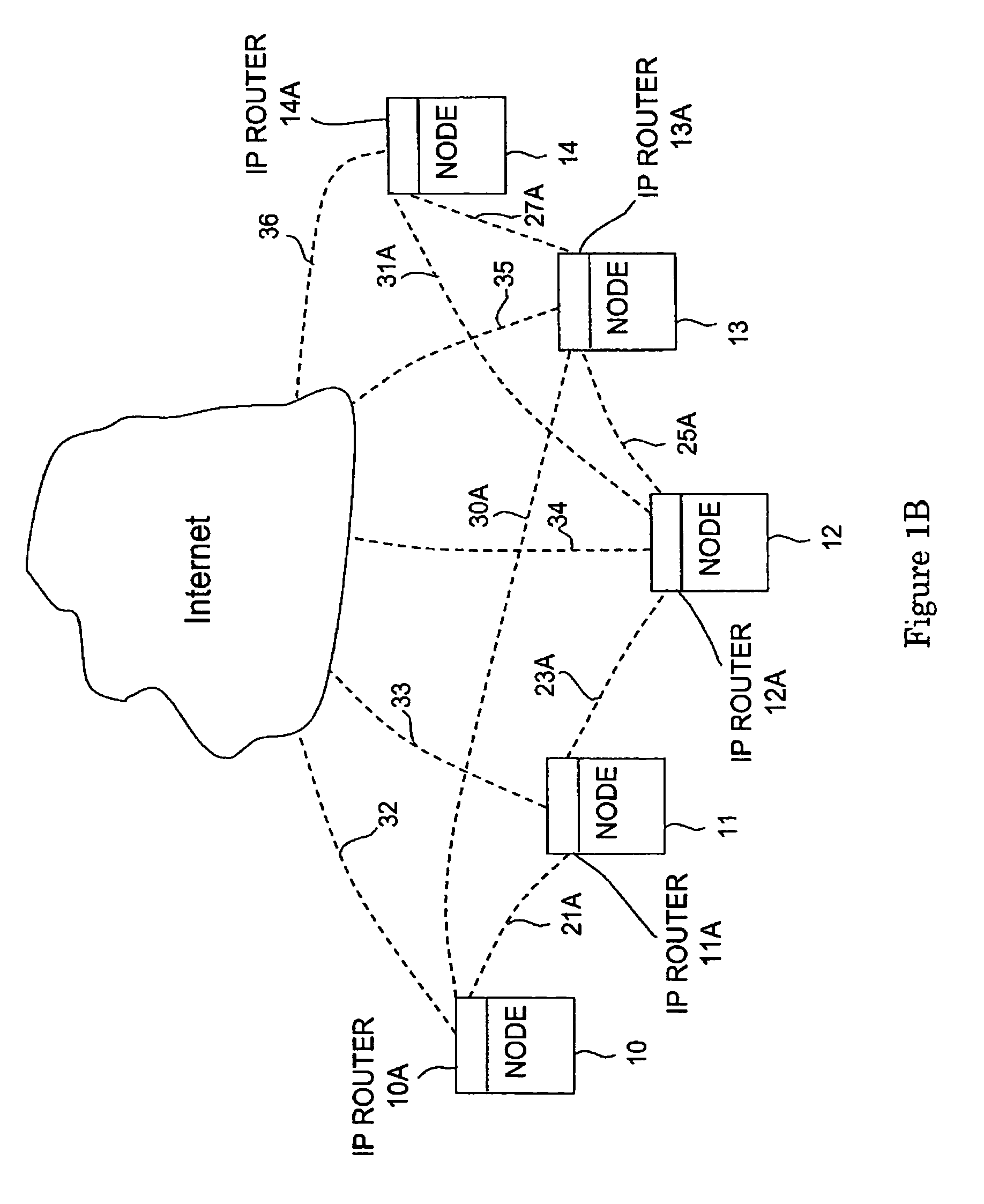Method for wavelength switch network restoration
a wavelength switch and network restoration technology, applied in the field of fiberoptic networks, can solve the problems of removing the available network capacity, unable to efficiently utilize the bandwidth of the network, and unable to achieve efficient network utilization, and achieve the effect of restoring connection
- Summary
- Abstract
- Description
- Claims
- Application Information
AI Technical Summary
Benefits of technology
Problems solved by technology
Method used
Image
Examples
Embodiment Construction
[0011]Traditional network restoration techniques utilize a central network controller. When the network controller is notified of a network failure, it may signal provisioning information to one or more nodes in the network to implement alternate routes for circuits affected by the failure. The calculation of the alternate routes may occur before or after the failure.
[0012]The present invention seeks to speed up this process by utilizing embedded, distributed control logic in each node. The chief benefit of this distributed approach is a significant saving of signaling times between the nodes of the network. FIG. 1A illustrates an exemplary fiberoptic network with a plurality of switch nodes. Five switch nodes 10–14 have been selected for the purposes of explanation. More or less switch nodes could be used. Each of the switch nodes 10–14 is connected to external data fiberoptic lines 20, 22, 24, 26 and 28 respectively, which are represented by dotted lines. For example, the switch n...
PUM
 Login to View More
Login to View More Abstract
Description
Claims
Application Information
 Login to View More
Login to View More - R&D
- Intellectual Property
- Life Sciences
- Materials
- Tech Scout
- Unparalleled Data Quality
- Higher Quality Content
- 60% Fewer Hallucinations
Browse by: Latest US Patents, China's latest patents, Technical Efficacy Thesaurus, Application Domain, Technology Topic, Popular Technical Reports.
© 2025 PatSnap. All rights reserved.Legal|Privacy policy|Modern Slavery Act Transparency Statement|Sitemap|About US| Contact US: help@patsnap.com



